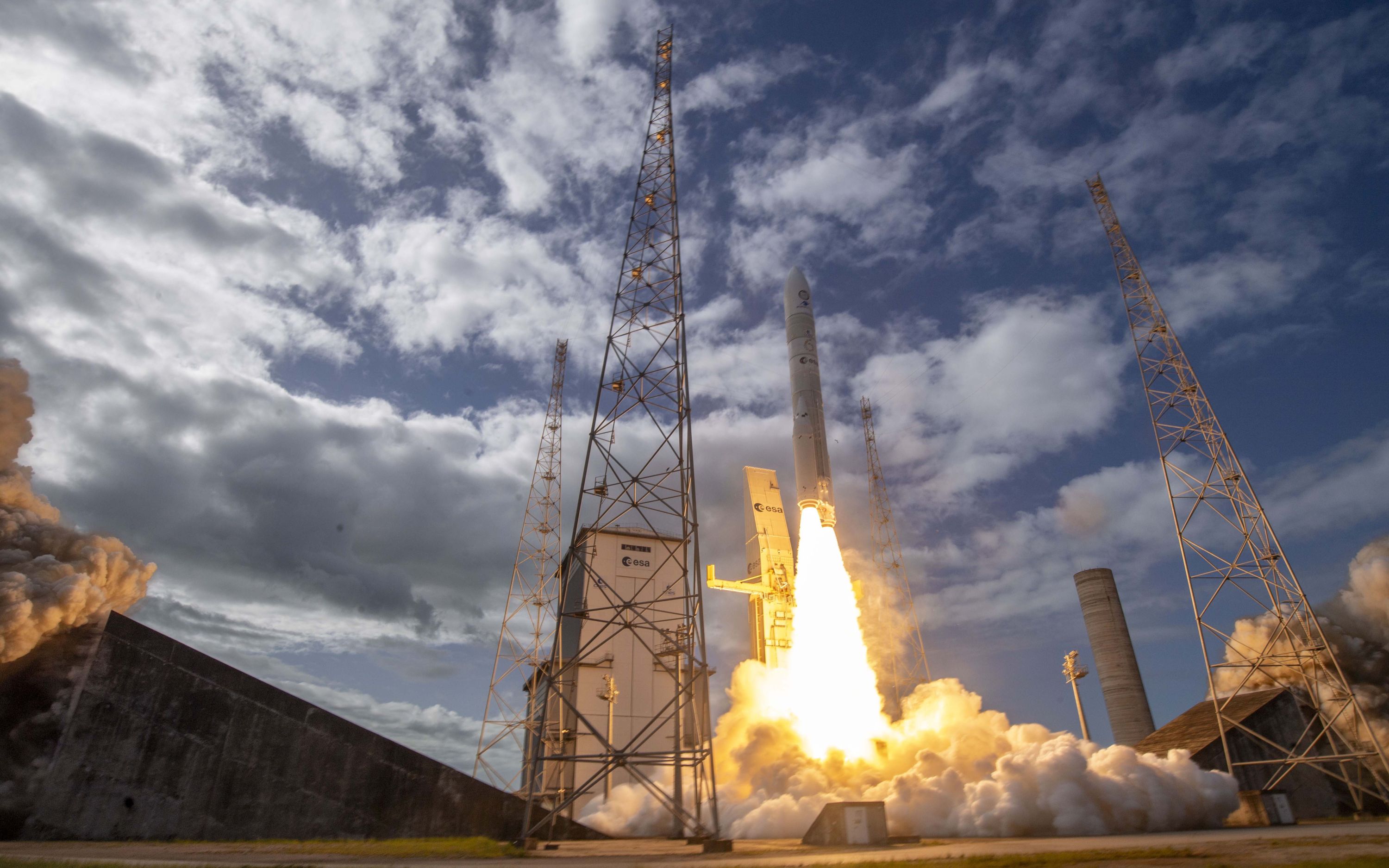Kourou (dpa) – Europe’s new Ariane 6 launcher has been blasted into space on its debut flight. The rocket lifted off from the European space centre in Kourou in French Guiana. Around a dozen countries were involved in the construction of Ariane 6, with Germany playing a key role.
The upper stage of the rocket was assembled in Bremen, while the upper stage tanks and parts of the engine were made in Augsburg and Ottobrunn in Bavaria respectively. The Vinci engine was tested in Lampoldshausen in Baden-Württemberg. After France, Germany is the most important financial backer among the ESA countries, having covered some 20 percent of the approximately four billion euros which the rocket cost.
“We’re making history today,” said European Space Agency Director General Josef Aschbacher to applause in Kourou. “Today is a great day – a day to celebrate.” The Chair of the Executive Board of the German Aerospace Centre (DLR) Anke Kaysser-Pyzalla said: “We’ve succeeded in creating another rocket here that can be built again and again in future in a kind of rocket factory.”
Europe’s aerospace industry has been eagerly awaiting the maiden flight of its new rocket for months. Great hopes are pinned on Ariane 6 to re-establish access to space for Europe, thereby securing independence. Since the Ariane 6 predecessor Ariane 5 was launched into space almost exactly a year ago, Europe has no longer had its own transporters capable of launching larger-scale satellites into space.





















Discussion about this post